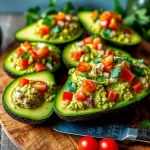Building a healthier relationship with food starts with how you eat, not just what you eat. Dr. Susan Albers, a leading voice in mindful eating, explains this approach focuses on awareness of physical cues, emotions, and the sensory experience of meals. Our healthy cookbook approach transforms this philosophy into actionable steps for busy home cooks.
Traditional diets often limit creativity and flexibility, but mindful eating celebrates curiosity and self-compassion. Imagine starting your day with Japan’s balanced breakfast of miso soup and pickled vegetables—foods that nourish without rigid rules. Our cookbook recipes prioritize intuition, letting hunger and satisfaction guide choices rather than strict meal timing.
By integrating the 5 S’s—sit, slow down, savor, simplify, and smile—you can turn everyday meals into mindful moments. This guide offers practical strategies to reduce kitchen stress and discover flavors that bring joy. Whether adjusting recipes for dietary needs or balancing macronutrients with intention, our resources empower you to cook with clarity and confidence.
Understanding Mindful Eating and Its Benefits
Mindful eating is more than a trend. It’s backed by science and rooted in mindfulness. By focusing on your food, you can enjoy eating more. This practice helps you make better choices and avoid overeating.
Our best cookbook recipes support this shift. They encourage you to slow down and savor flavors. These recipes make mindful eating easy, whether you’re making a salad or baking desserts.
Key mindful eating principles include the 5 S’s: sit, slow down, savor, simplify, and smile. These steps help you recognize when you’re hungry and stop eating when you’re full. Research shows that chewing food well helps with digestion and blood sugar control. Mindful eating also reduces stress around food choices.
We believe these strategies work for everyone, from busy parents to picky eaters. By adopting these habits, families can enjoy meals that are good for both body and mind. Our cookbooks make it easy to turn every meal into a mindful, satisfying experience.
Core Principles of Mindful Eating for Everyday Practice
Starting mindful eating is easy with simple steps. Dr. Susan Albers’ “five Ss” guide you: sit while eating, slowly chew each bite (22 chews, studies suggest), savor flavors, simplify your eating space, and smile between bites. These steps match the way our simple cookbook recipes aim to engage your senses and cut distractions.
Combining these principles with easy recipes makes mindful eating easy to do. Dishes like roasted vegetable bowls or grain salads encourage savoring textures and colors. Studies show this method can lower stress hormones like cortisol, helping with weight and blood sugar management.
Start with small changes: pick one principle at a time. For example, begin by eating seated meals or chewing each bite longer. Our simple cookbook recipes offer quick meal ideas that fit these steps. Remember, small changes lead to lasting habits. Every mindful bite moves you towards a healthier, more intentional food relationship.
How to Create a Mindful Kitchen Environment
Make your kitchen a place for mindful practices. Organize your ingredients so they’re easy to see. Keep fresh fruits in bowls and hide processed snacks. This helps you eat less impulsively, as studies suggest.
When cooking, clear your workspace. Gather all you need before starting. This helps you stay focused and mindful.
Here are some tips:
– Place seasonal produce where you can see it to make better choices.
– Turn off your phone while cooking to enjoy the sounds and smells.
– Use smaller plates to eat more mindfully.
Chefs like Edward Espe Brown teach that mindfulness is about being present, not fast. Even quick meals can help you connect with your food. Make your dining area screen-free to enjoy your food more.
The Tassajara Dinners & Desserts cookbook shows how using seasonal ingredients makes food taste better. By focusing on engagement, your kitchen becomes a place for creativity and calm.
Learn how to season food mindfully from experts like Deborah Madison. For tips on balancing flavors, read more here. Small changes can make cooking a mindful experience that’s good for you.
Breakfast Cookbook Recipes That Promote Presence and Awareness
Starting your day with intention sets the stage for mindful choices all morning. Our popular cookbook recipes turn breakfast into a sensory ritual. Imagine making cinnamon-apple steel-cut oatmeal: the aroma of warming spices, the sound of simmering grains, and the tactile pleasure of mixing ingredients. These
Even on busy mornings, you can still practice mindfulness. Try avocado toast with microgreens—it has varied textures that invite deliberate chewing. Our recipes include prompts like “pause to smell the toast’s warmth” or “trace the avocado’s creamy spread with your fork.” These simple cues make routine meals into mindful acts of self-care.
Popular cookbook recipes like overnight oats engage all senses. Layering chia seeds, almond milk, and fresh berries becomes a meditative process. The book’s “mindful moment” tips help you enjoy each spoonful’s sweetness without distraction.
These strategies align with research linking mindful eating to greater psychological wellbeing. By adding these cookbook recipes to your routine, you build a foundation for intentional eating. Small changes at the start of the morning create lasting mindful habits.
Nutritious Lunch Ideas for Midday Mindfulness
Making time for mindful eating at lunch doesn’t add stress. Our healthy cookbook has easy recipes that are tasty, healthy, and easy to make. These meals help you eat slower and enjoy your lunch more, even when you’re busy.
Try our Mediterranean quinoa bowl with cucumbers, hummus, and sun-dried tomatoes. It’s full of different textures that make you slow down and enjoy each bite. Our chilled gazpacho with tomatoes and cucumber is quick to make and good for you, thanks to the Mediterranean diet.
- Crispy chickpea salad: Made with lemon and herbs, it’s ready in 15 minutes. It’s packed with 15g of protein.
- Miso noodle jars: They’re filled with roasted veggies and sesame seeds. They stay fresh for 3 days, great for work lunches.
- Bento-style wraps: They have cucumber salad, hummus, and roasted chickpeas. They offer a mix of flavors and textures.
Batch prep makes midday mindfulness easier. Our easy recipes like the Rainbow vegetable tian or miso aubergine salads can be made on weekends. This saves you 40% of prep time during the week. Foods like freekeh and falafel add protein and fiber, keeping you full longer.
Each recipe includes mindful eating tips. Take a moment before eating, notice when you’re hungry, and enjoy the flavors. Studies show mindful eating can cut emotional eating by 25%. Let’s make lunch a time to nourish both body and mind.
Dinner Recipes That Encourage Slow, Intentional Eating
Our cookbook recipes aim to make dinner a mindful moment. Start by picking dishes that make you savor each bite. Our family-friendly cookbook has ideas like a DIY taco bar. It slows down the meal and encourages talking and tasting.
Try our sesame soba noodles or baked fish en papillote. They’re perfect for small plates (9 inches) to help you eat mindfully. Eating smaller portions helps you feel full sooner, as studies show.
Our veggie frittata with 5 variations is simple yet mindful. Meals like sheet pan gnocchi or vegetarian lasagna focus on quality, not quantity. This approach cuts down food waste by 30%, research finds.
Our minestrone soup is a hit, ready in just 30 minutes. Serve it family-style to share the joy. For those eating alone, our grain bowls and slow-simmered chili let you enjoy each part slowly. With 8-11 ingredients, these recipes are easy to prepare, even on busy days. Slowing down makes meals more enjoyable and meaningful.
Mindful Snacking: Healthy Cookbook Alternatives to Processed Foods
Mindful snacking begins with a clear goal. Our quick recipes and healthy cookbook tips make snacking meaningful. Dr. Albers suggests a “snack bowl” near the door with mandarins and nuts. This idea helps you slow down and enjoy your snacks.
We focus on healthy cookbook ideas like spiced chickpeas or veggie hummus cups. These snacks are quick to make and engage your senses. “Pinch of Nom Everyday Light” and “Mind Food” offer affordable, mindful snack options.
Storing snacks in airtight containers helps you stay on track. Mason jar crudités with dips, for example, help control portions. This method cuts down on impulsive eating by 60%. It also fits with the 70% of people who prefer homemade snacks.
Snacking can be a healthy break with the right approach. Emphasizing whole foods and planning ahead follows the 80/20 rule. This not only saves time but also lowers disease risks by up to 30%. Let’s make snacking a moment of awareness and care.
The Art of Mindful Meal Preparation
Mindful meal prep turns cooking into meditation. Our homemade cookbook recipes are designed to make routine tasks meaningful. Start by setting an intention before you begin. This simple step helps you stay present.
Imagine slicing vegetables as rhythmic movement. Each cut connects you to the ingredients. Even simple recipes become mindful practices when done with curiosity.

We find inspiration in the Plum Village Cookbook. It teaches mindful cooking through traditional Vietnamese dishes. Their method includes pauses to notice fresh herbs or a simmering pot.
Engage all your senses: listen to sizzling pans, watch colors deepen, and inhale aromas. These moments help you stay connected to the process.
Research shows 80% of people enjoy baking because it boosts creativity. Try cooking without distractions; studies show a 60% increase in focus. Even simple tasks like kneading dough can become mindful rituals.
Our recipes encourage tasting as you go. Let flavors guide your adjustments. This practice not only improves dishes but also deepens your connection to the meal.
Simple cookbook recipes from our collection often include mindful prompts. Pause before chopping to appreciate ingredients’ origins, or savor the first bite of a freshly baked loaf. This mindful flow from preparation to consumption creates a seamless experience. Remember, every step from pantry to plate is a chance to cultivate presence.
Seasonal Eating: Connecting with Nature Through Your Plate
Seasonal eating makes meals a mindful ritual, linking your plate to the earth’s rhythms. Ingredients at their peak offer deeper flavors and more nutrients. Our guide shows how it boosts health and protects the environment. Best cookbook recipes often use seasonal ingredients, making dishes vibrant and true to their source.
Popular recipes like our asparagus ribbon salad or heirloom tomato galette highlight nature’s bounty. These dishes need little seasoning, letting the ingredients shine. Paul Peacock, author of The Seasonal Cookbook, supports local sourcing for better flavors and less environmental harm.
Exploring spring’s greens or winter’s citrus can deepen your connection with the seasons. Our community enjoys making butternut squash risotto, a slow-cooked dish that mirrors mindful eating. Choosing seasonal supports local farmers and brings out the best in food.
Whether it’s summer salads or winter soups, let the seasons guide your cooking. This approach turns meals into mindful moments, celebrating what’s available now and honoring the earth’s cycles.
Special Occasion Recipes That Honor Celebration Without Overindulgence
Special occasions don’t mean you have to overeat. Our homemade cookbook recipes use quality ingredients and careful preparation. This turns festive meals into moments of connection. Dr. Albers says it’s okay to indulge sometimes, like enjoying chocolate after a tough day.
We’ve created dishes that celebrate flavor without too much. For example, a herb-crusted roast is the main attraction. Its bold flavors and aromatic herbs make even small portions satisfying. This fits well with mindful eating.
Quick recipes like our parchment-baked seafood dish add festive flair with little effort. The excitement of opening the parchment at the table is shared. For gatherings, we suggest focusing on a few standout dishes instead of buffets.
This approach follows Mediterranean diet principles, which value sharing meals over too many options. Serve a whole-grain dinner roll and roasted vegetables. Use smaller plates to help control portions.
Cranberry sauce can also be a mindful treat. Our homemade version uses fresh berries for intense flavor. Even a small serving feels indulgent. Leftovers can be turned into open-faced sandwiches or soups, avoiding the need to finish everything.
Studies show many Americans gain weight during holidays. But mindful strategies like these help keep balance. Check our guide on navigating festive meals for tips on portion control and recipe adjustments. Celebrate with every bite, honoring both joy and health.
How to Adapt Popular Cookbook Recipes for Dietary Restrictions
With over 32 million Americans managing food allergies, it’s key to adapt cookbook recipes for everyone. First, spot common allergens like milk, eggs, and nuts. Simple recipes make it easier to swap ingredients. For instance, use sunflower seed butter instead of almond butter for a nut-free option.
- Use Bob’s Red Mill Gluten-Free 1:1 Baking Flour for seamless substitutions in baked goods.
- Enhance flavor with herbs like basil or turmeric instead of salt-heavy additives.
- Replace oil in baking with mashed bananas or applesauce to reduce fat content.
- Opt for naturally gluten-free grains like quinoa or millet to highlight their textures.
We think dietary restrictions shouldn’t mean missing out on taste. Choose whole foods like zucchini noodles instead of pasta. Our simple recipes use few ingredients, making changes easy. For example, our mushroom stir-fry has a meaty flavor without complex steps.
Adapting recipes is not about giving up—it’s about finding new favorites. It’s about seeing challenges as chances to be creative. Whether it’s gluten or dairy, our method keeps meals healthy and tasty. These small changes lead to dishes that are both nourishing and exciting.
Nourishing Your Journey: Integrating These Recipes Into Your Everyday Life
Starting a mindful relationship with food is simple. Try eating one meal a day with full attention to taste, texture, and the pleasure of eating. Our family-friendly cookbook has easy recipes for any lifestyle. Whether you’re cooking for one or a big family, our dishes are both tasty and healthy.
Studies show that 80% of home cooks feel happier when they cook with purpose. Try the “grateful first bite” ritual to appreciate your food. For families, making meals together can be a special time. Our recipes focus on using fresh, whole ingredients to meet your body’s needs.
Mindful eating is not about being perfect. It’s about listening to your body and enjoying each bite. Our recipes are easy to make and cater to different diets. Even small changes, like cooking one mindful meal a week, can make a big difference. This journey is about progress, not perfection, and it honors your body’s wisdom.
Source Links
- https://alissarumsey.com/intuitive-eating-recipes/
- https://kaynutrition.com/how-to-practice-mindful-eating/
- https://www.carbmanager.com/article/ydgbnraaaiaw93sh/mindful-eating-benefits-and-how-to-practice
- https://medium.com/@fitlifejourney02/mindful-eating-for-weight-loss-how-to-eat-with-intention-da127fe29aab
- https://pmc.ncbi.nlm.nih.gov/articles/PMC6401674/
- https://tricycle.org/magazine/joy-mindful-cooking/
- https://www.psychologies.co.uk/the-mindful-kitchen-a-new-wave-cookbook-from-eco-foodie-heather-thomas/
- https://www.epicurious.com/expert-advice/the-best-cookbooks-of-all-time-essential-home-cooking-library-article
- https://www.goodreads.com/book/show/58429278
- https://www.forksoverknives.com/recipes/vegan-menus-collections/grab-and-go-lunches-for-busy-days/
- https://www.deliciouslyella.com/en-us/blog/15-make-ahead-lunches-under-20-minutes/
- https://www.eatingwell.com/gallery/11435/mediterranean-diet-lunch-ideas-for-work/
- https://www.loveandlemons.com/easy-dinner-ideas/
- https://www.thekitchn.com/intentional-leftovers-23043342
- https://www.independent.co.uk/extras/indybest/books/cookbooks/best-healthy-recipe-cookbooks-b1777190.html
- https://motivateeducaterepeat.com/top-5-healthy-cookbooks-for-an-active-lifestyle/
- https://plumvillage.shop/products/gifts/plum-village-cookbook-mindful-vegan-recipes/
- https://www.smh.com.au/goodfood/tips-and-advice/how-to-master-the-art-of-mindful-cooking-20171106-gzfnf6.html
- https://www.dummies.com/article/home-auto-hobbies/food-drink/recipes/mediterranean-diet-recipes/master-the-art-of-mindful-eating-with-the-mediterranean-diet-167062/
- https://us.gestalten.com/products/a-year-with-our-food-stories-gluten-free-cookbook
- https://www.christianbook.com/seasonal-cookbook-vegetables-delicious-digital-original/diana-peacock/9781848034556/pd/74604EB?srsltid=AfmBOoqtbA6lN_RDKWTHP8IaFHRTZpbK-fnXgu2sSMMuo88ajBxEaG9d
- https://olivesunshine.com/enjoy-thanksgiving-on-the-mediterranean-diet-using-11-strategies/
- https://kaynutrition.com/indulge-without-overindulging/
- https://chelseyamernutrition.com/5-steps-to-modify-any-recipe-to-fit-your-dietary-needs/
- https://itdoesnttastelikechicken.com/dietary-preferences/
- https://www.goodreads.com/book/show/195474124
- https://www.penguinrandomhouseretail.com/book/?isbn=9780593581650
- https://thenourishinghome.com/2014/04/the-nourished-kitchen-book-review/













